Abstract
Six specific-pathogen-free cats were exposed by aerosol to a feline calicivirus of low virulence (F-9 virus). Homotypic (anti-F-9) seroconversion occurred in all cats by postexposure day 14. The serum of one cat on postexposure day 14 and four of six cats on postexposure day 35 neutralized feline picornavirus isolate no. 225 (FPV-255), a virulent feline calicivirus. Homologous antiviral activity was detected before the appearance of heterologous (anti-FPV-255) activity and always was present in higher titer. Protective immunity was evaluated on postexposure day 35 by aerosol challenge with FPV-255. The pyrexia, depression, dyspnea, oral ulcers, and severe pneumonia produced in two susceptible specific-pathogen-free cats by exposure to FPV-255 did not occur in the cats that had been infected previously with F-9 vir. The study demonstrates that heterotypic protective immunity to feline calicivirus disease can be induced by prior infection with feline calicivirus of low virulence.
Full text
PDF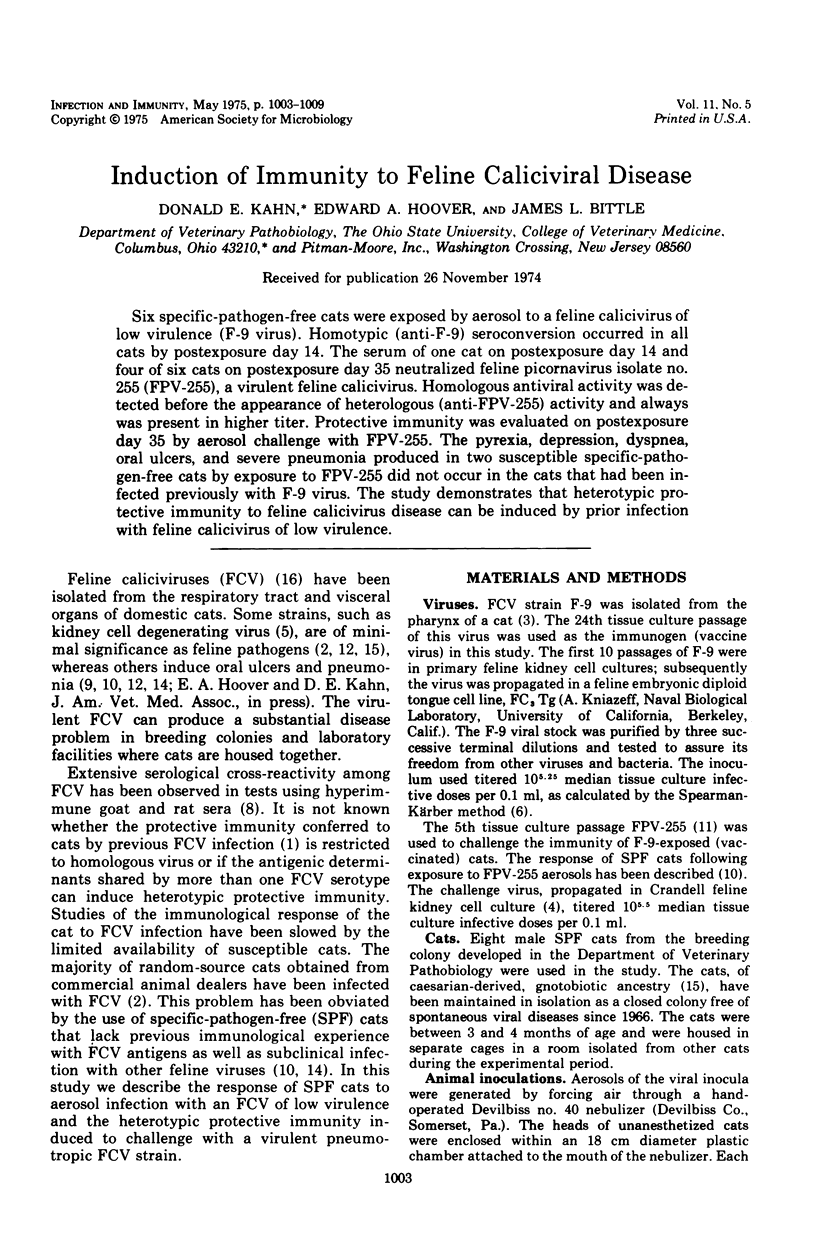
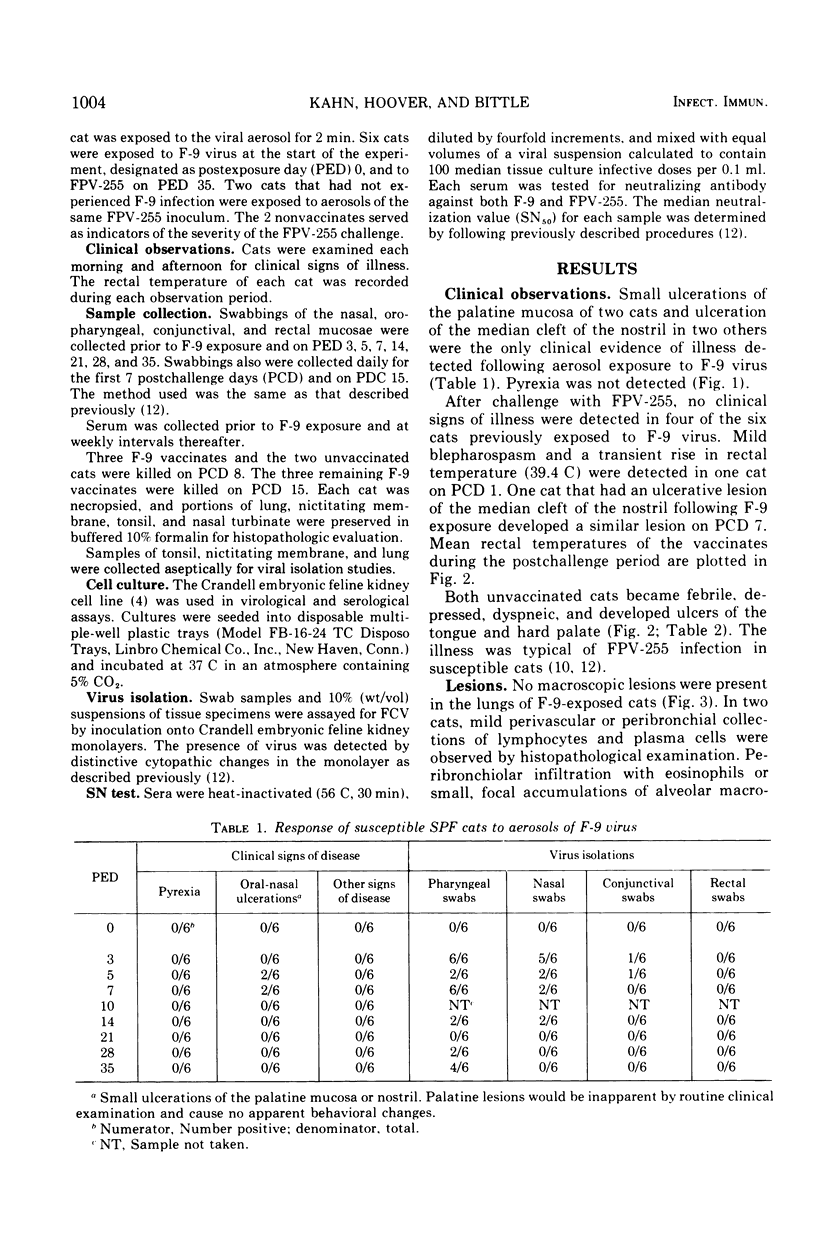
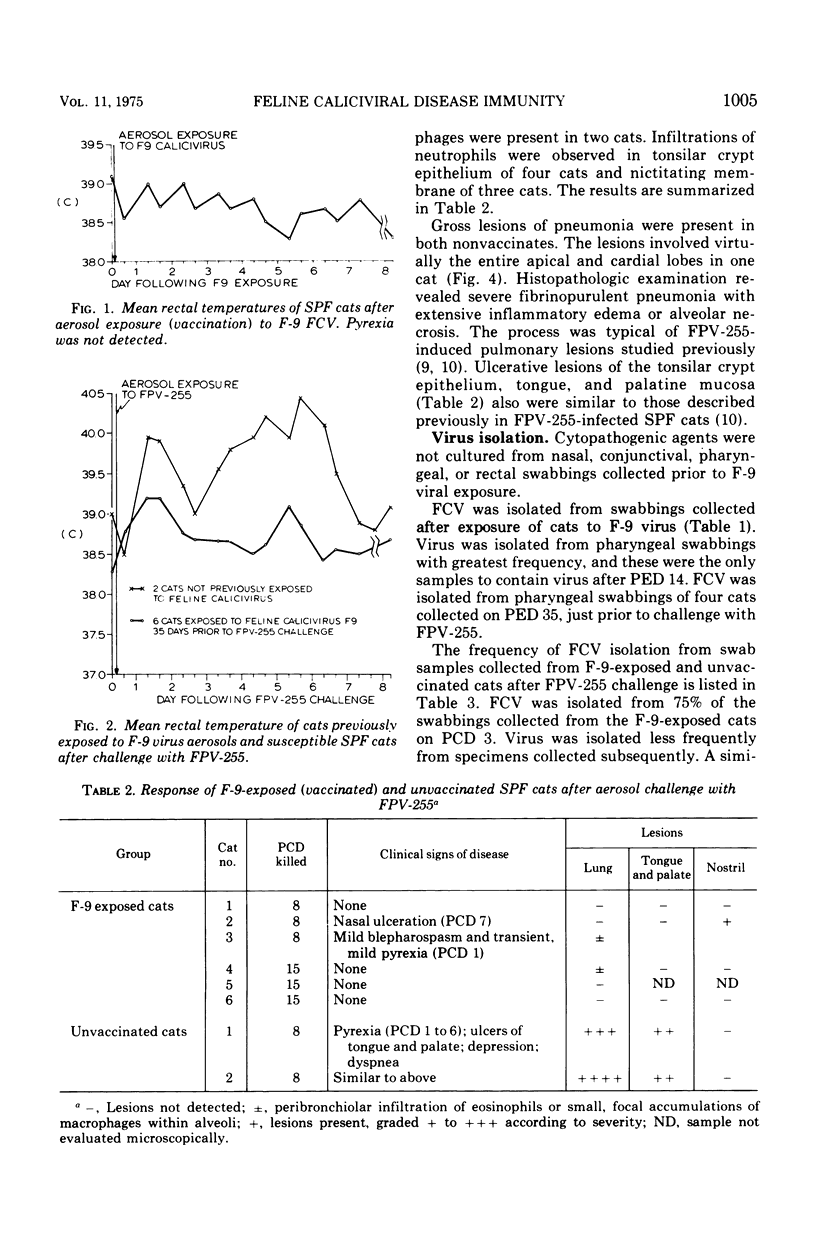
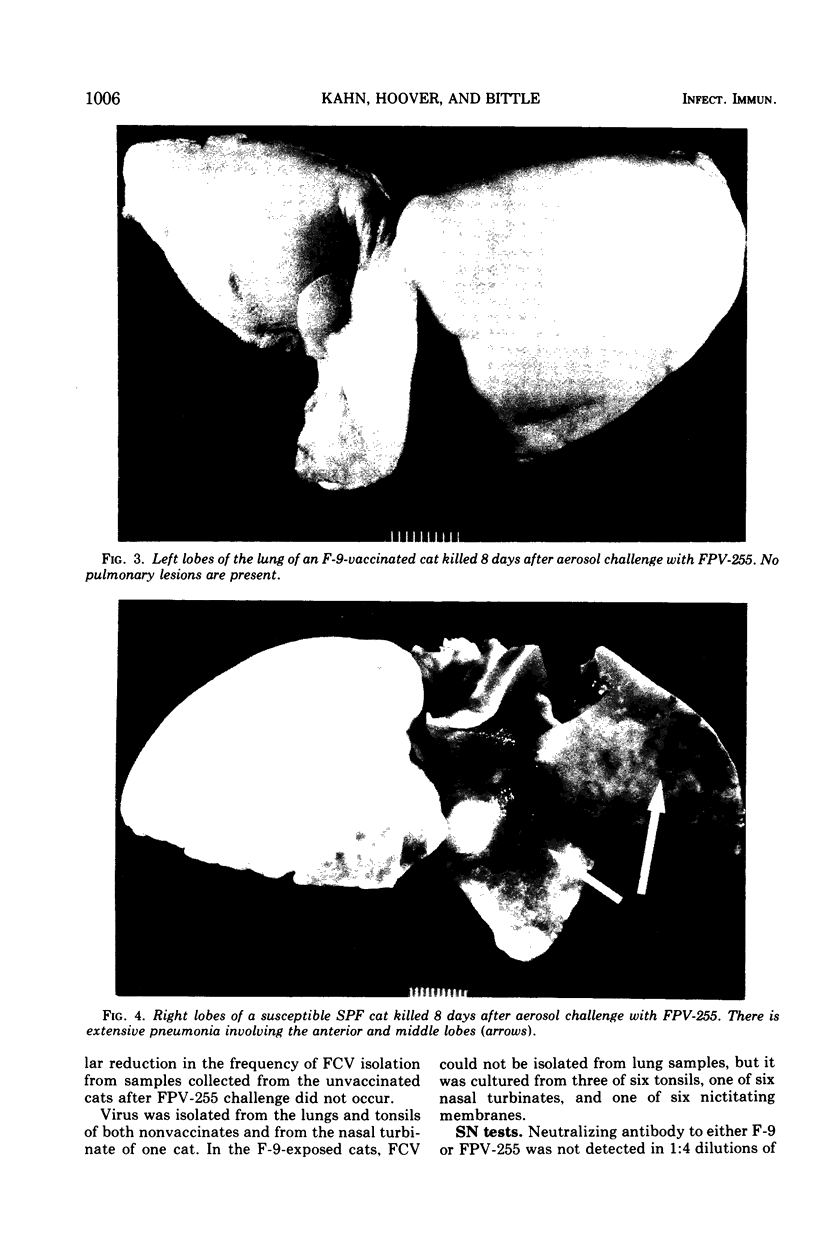
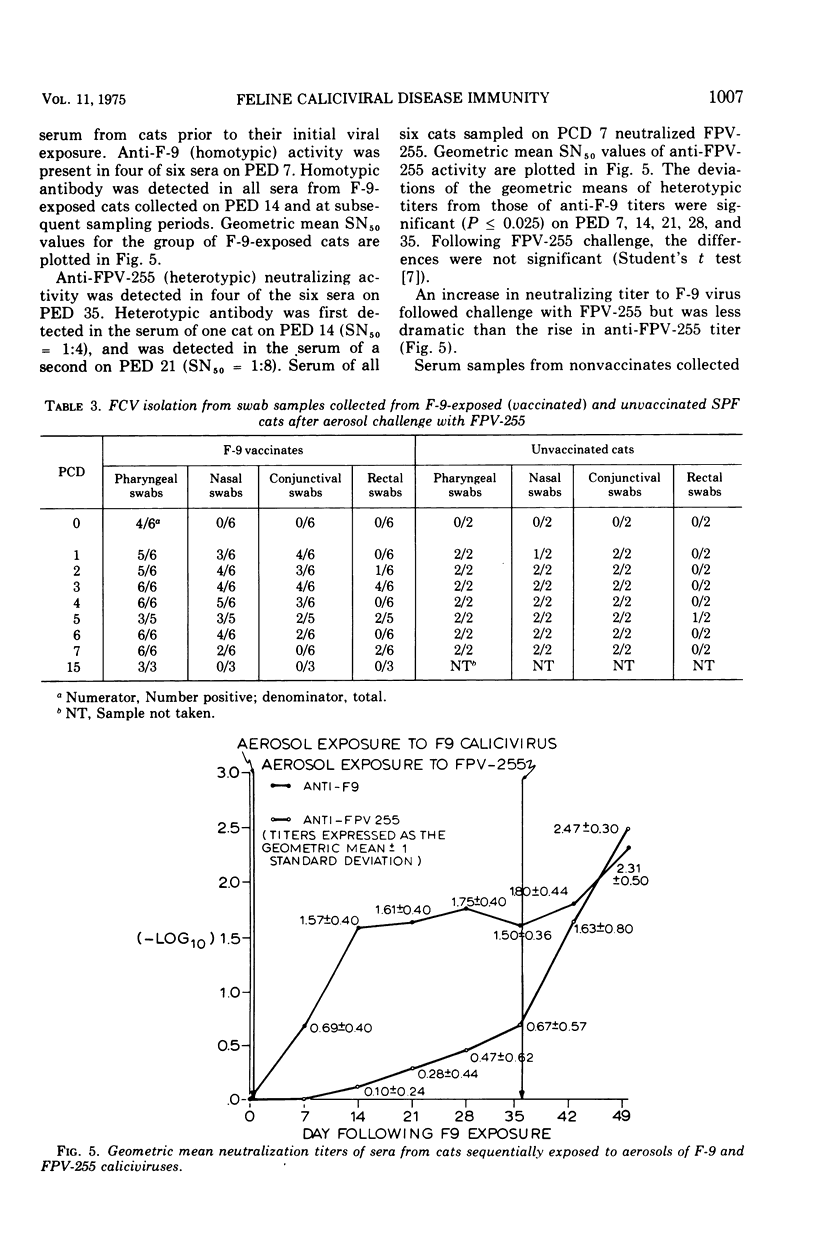
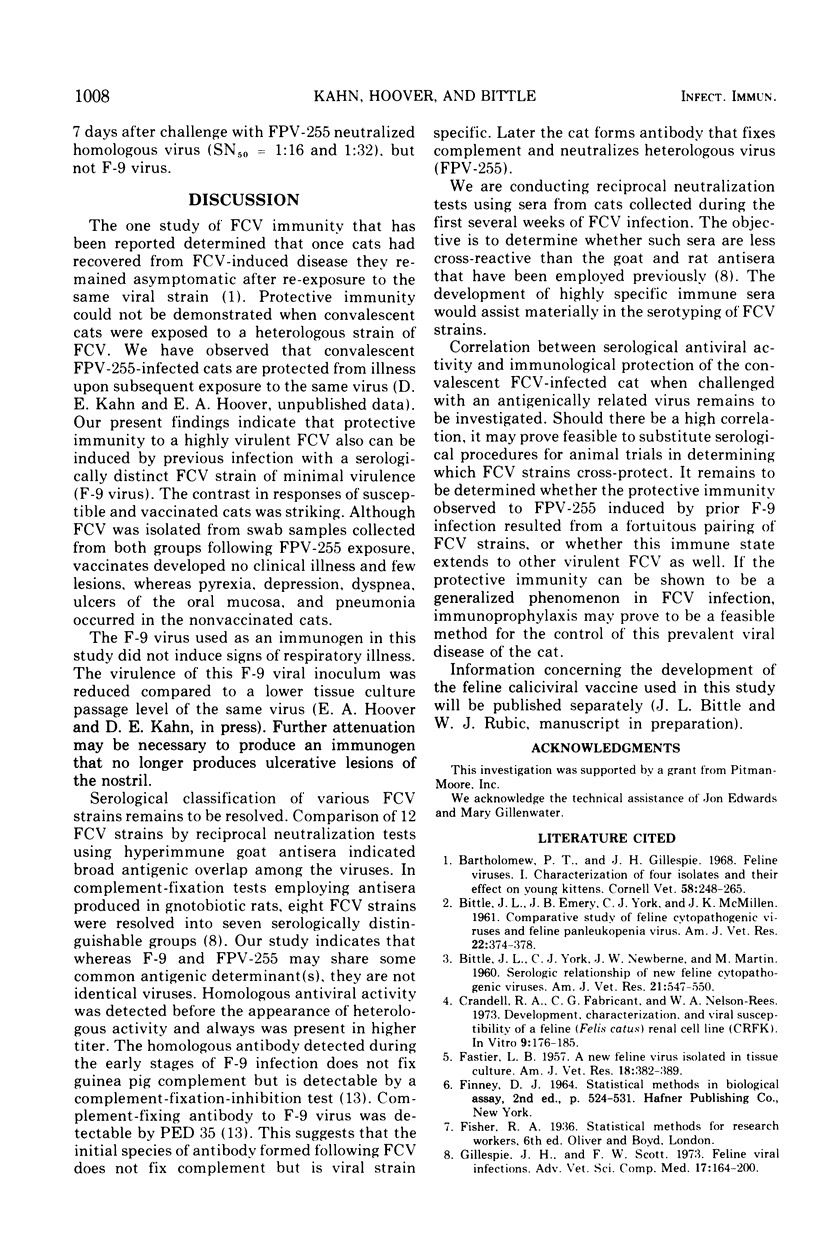

Images in this article
Selected References
These references are in PubMed. This may not be the complete list of references from this article.
- Bartholomew P. T., Gillespie J. H. Feline viruses. I. Characterization of four isolates and their effect on young kittens. Cornell Vet. 1968 Apr;58(2):248–265. [PubMed] [Google Scholar]
- Crandell R. A., Fabricant C. G., Nelson-Rees W. A. Development, characterization, and viral susceptibility of a feline (Felis catus) renal cell line (CRFK). In Vitro. 1973 Nov-Dec;9(3):176–185. doi: 10.1007/BF02618435. [DOI] [PubMed] [Google Scholar]
- FASTIER L. B. A new feline virus isolated in tissue culture. Am J Vet Res. 1957 Apr;18(67):382–389. [PubMed] [Google Scholar]
- Holzinger E. A., Kahn D. E. Pathologic features of picornavirus infections in cats. Am J Vet Res. 1970 Sep;31(9):1623–1630. [PubMed] [Google Scholar]
- Hoover E. A., Kahn D. E. Lesions produced by feline picornaviruses of different virulence in pathogen-free cats. Vet Pathol. 1973;10(4):307–322. doi: 10.1177/030098587301000404. [DOI] [PubMed] [Google Scholar]
- Kahn D. E., Gillespie J. H. Feline viruses. X. Characterization of a newly-isolated picornavirus causing interstitial pneumonia and ulcerative stomatitis in the domestic cat. Cornell Vet. 1970 Oct;60(4):669–683. [PubMed] [Google Scholar]
- Kahn D. E., Gillespie J. H. Feline viruses: pathogenesis of picornavirus infection in the cat. Am J Vet Res. 1971 Apr;32(4):521–531. [PubMed] [Google Scholar]
- Olsen R. G., Kahn D. E., Hoover E. A., Saxe N. J., Yohn D. S. Differences in acute and convalescent-phase antibodies of cats infected with feline picornaviruses. Infect Immun. 1974 Aug;10(2):375–380. doi: 10.1128/iai.10.2.375-380.1974. [DOI] [PMC free article] [PubMed] [Google Scholar]
- Povey R. C., Hale C. J. Experimental infections with feline caliciviruses (picornaviruses) in specific-pathogen-free kittens. J Comp Pathol. 1974 Apr;84(2):245–256. doi: 10.1016/0021-9975(74)90065-6. [DOI] [PubMed] [Google Scholar]
- Rohovsky M. W., Griesemer R. A., Wolfe L. G. The germfree cat. Lab Anim Care. 1966 Feb;16(1):52–59. [PubMed] [Google Scholar]




